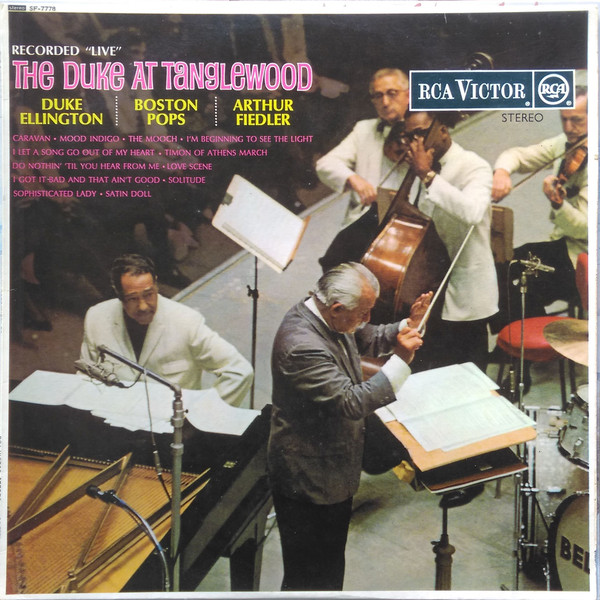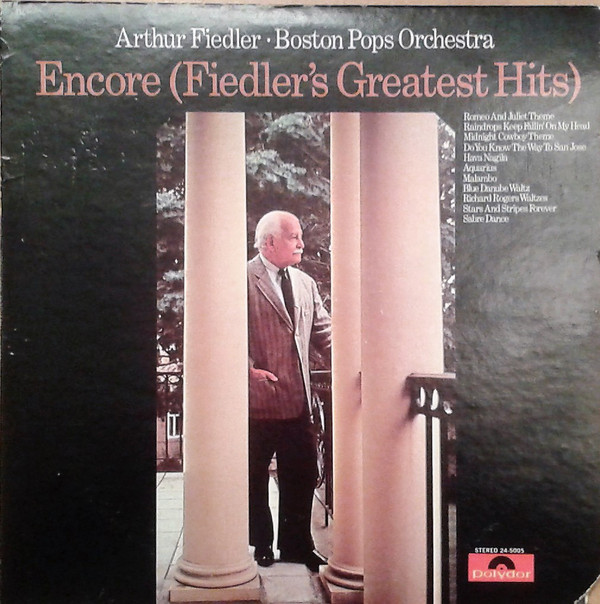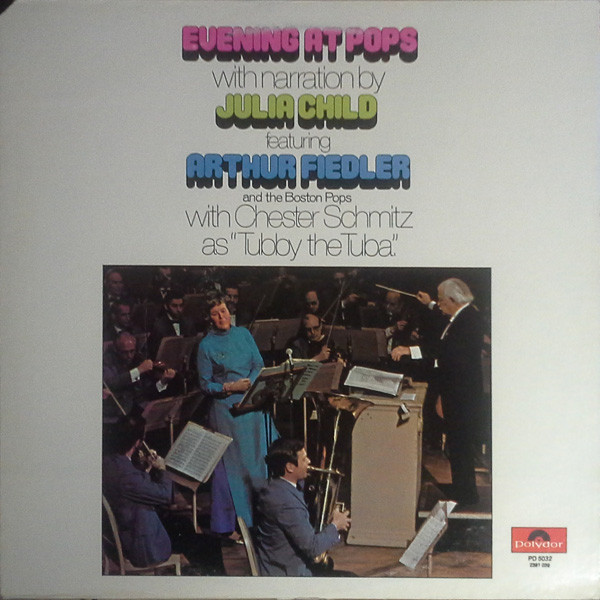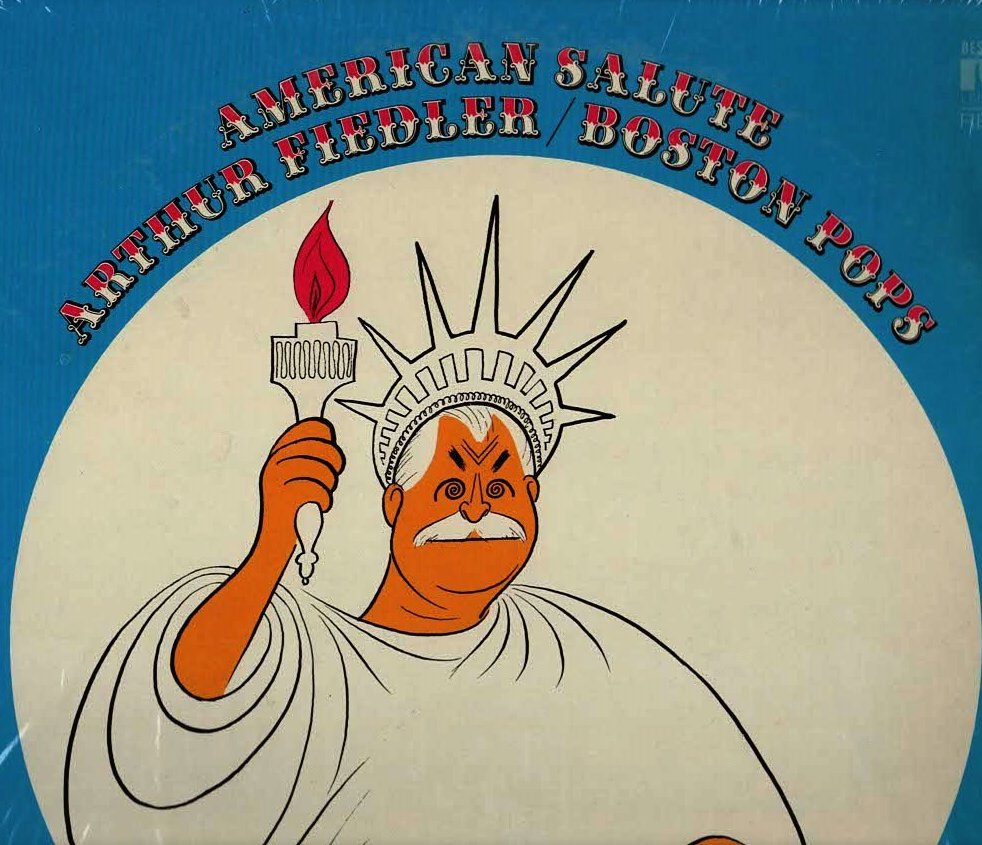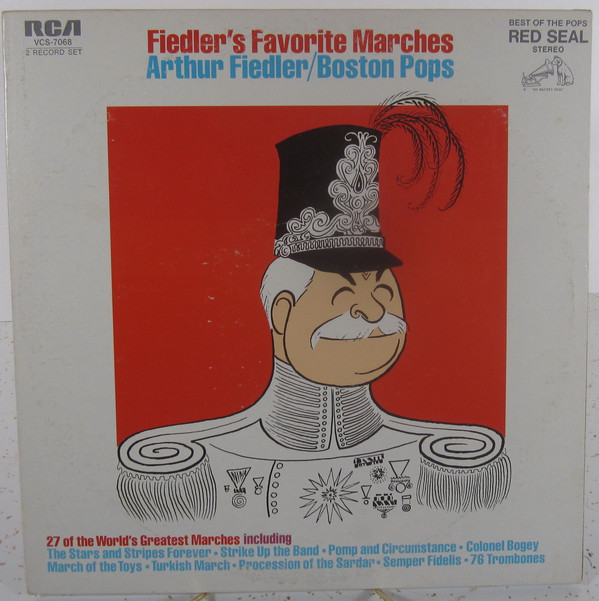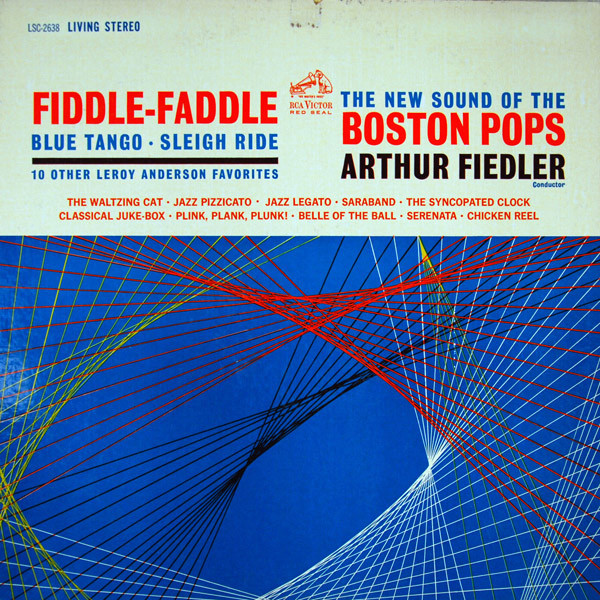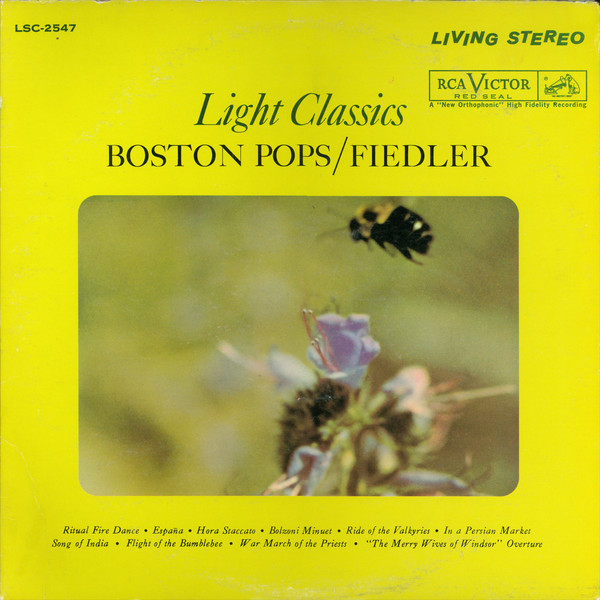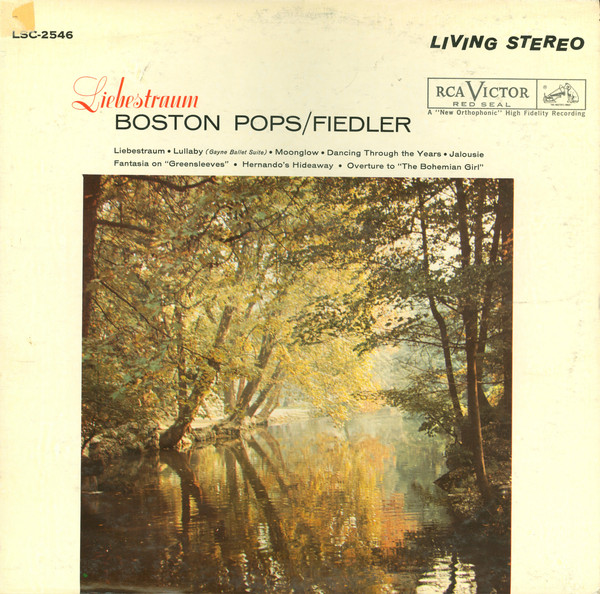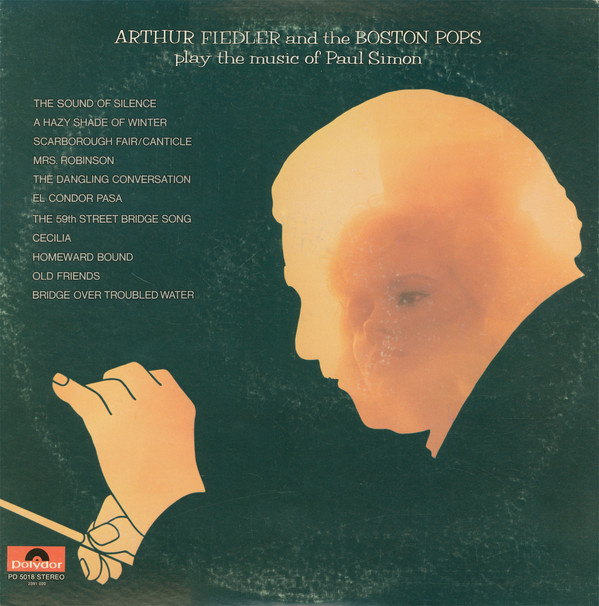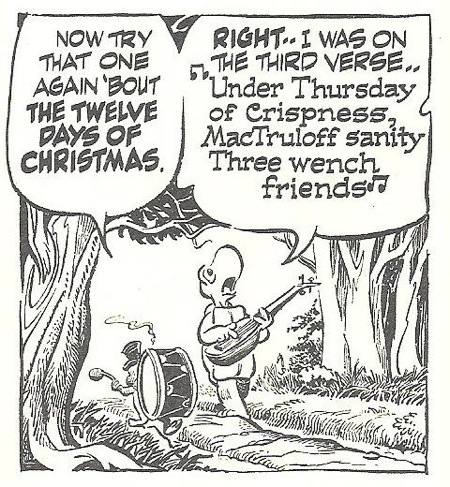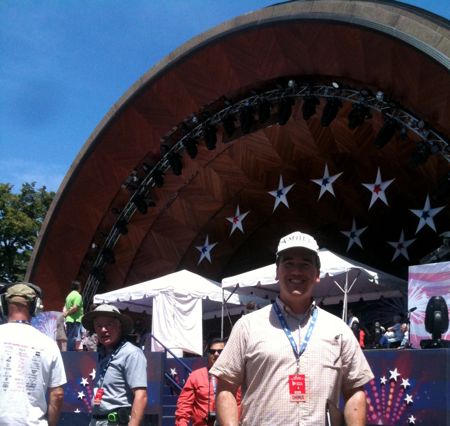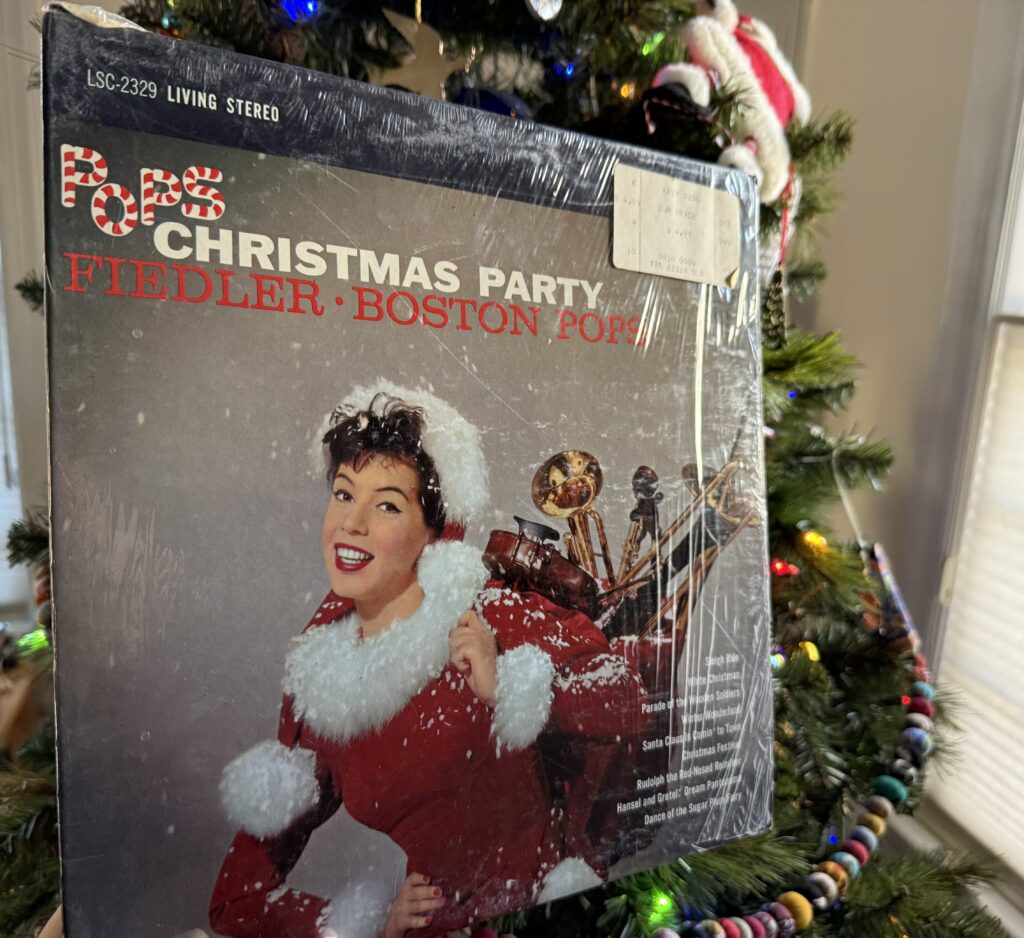
Album of the Week, December 14, 2024
For about 100,000 people every year in my adopted home town of Boston, the Holiday Pops are a major attraction and marker of the holiday season. The modern institution as we know it today—a series of December concerts with repertoire both classical and popular, garnished by a certain man in a big red coat—has existed since 1973. But the Boston Pops has been programming holiday fare for much longer. Its iconic “Sleigh Ride,” Leroy Anderson’s feature for whinnying trumpet, sleigh bells and slapstick, was written in 1948 (based on an idea the composer got in a 1946 heat wave) and premiered in a concert in May of that year. And the Pops has long had a deep bench of holiday arrangements as well. As far as I can tell, the Pops Christmas story starts in earnest with today’s album, 1959’s A Pops Christmas Party.
The album is a combination of arrangements, medleys, and works written especially for the orchestra, along with light classical pieces that carry the flavor of the season—in other words, a typical Pops album. And the hands of three of the Pops’ great arrangers and composers—Anderson, Jack Mason, and Richard Hayman—are all over it.
“A Christmas Festival” kicks us off in fine Pops style. Most Holiday Pops concerts start with a fanfare, frequently a medley of familiar Christmas carols, and this Leroy Anderson arrangement is the grandaddy of them all. Fiedler takes the opening in a stately tempo and then gradually accelerates up to something more like a slow modern Pops tempo. The genius of Anderson shows in the moving eighth note accompaniment to “Deck the Hall with Boughs of Holly,” which manages to be both traditional and ultramodern at once, and there are touches of this throughout—the passing trumpet notes at the end of “Deck,” the moving eighth note pizzicati and winds that mark the edges of “God Rest Ye Merry Gentlemen,” and so on throughout. I think my favorite moment, though, is the few notes played on the tubular bells in the midst of “Silent Night”—just before the winds provide the rapid-fire accompaniment that signals the beginning of “Jingle Bells” and the approaching finale. The syncopation in the brass that begins the second verse ends by morphing into what feels for all the world like a can-can on “O Come, All Ye Faithful” before it turns into a massive orchestral finale, with all hands on deck. Here Fiedler takes the tempo at something approaching breakneck speed as the organ roars the final notes.
The record’s performance of “White Christmas” is as sedate and mystical as I’ve ever heard it. Though the celeste is not quite in unison with the pizzicato strings on the two out of tempo notes, still the strings play in gorgeous muted harmony under the concertmaster’s solo. (Aside: it was often a custom before I joined the TFC that the musicians would toss pennies at Pops concertmaster Tamara Smirnova’s feet after she completed the solo, signaling their approval.) This version, the original arrangement by composer Jack Mason, lacks the choral coda and key change that has been the Pops’ practice since I joined.
By contrast, the Pops’ “Sleigh Ride” hasn’t changed a note since its inception, save perhaps for the arrival of Sparkle the Magical Christmas Unicorn in recent years. It remains a perfect bit of musical scene painting, with literal slapstick to play the role of the cracking whip. Mason’s arrangement of “Winter Wonderland,” which follows, has since disappeared, victim of its midcentury ballroom dancing aesthetic. But they’ve brought back Léon Jessel’s “Parade of the Wooden Soldiers,” courtesy of a brilliant bit of animation that illustrates the journey and travails of the titular toy. (It doesn’t seem to be online, but there’s a short preview on Facebook.)
In a reversal of current Pops practice, the classical works are saved for the opening of the second half of the album. The “Dream Pantomime” from Engelbert Humperdinck’s light opera Hansel and Gretel seems to have fallen by the wayside as a holiday piece, but it’s lovely here, with delicate work from the strings throughout as the angels come to surround and protect the lost children as they sleep.
Mozart’s “Sleigh Ride,” from his German Dances, is also an unlikely Christmas work, but is at least more commonly played—if not overly familiar from high school orchestra concerts. The Pops play it straight here, with the emergence of the sleigh bells seeming to signal the sleigh breaking into the open after passing through the dense orchestration. The “Dance of the Sugar-Plum Fairy” from Tchaikovsky’s Nutcracker Suite of course remains a beloved holiday classic to this day, appearing mostly recently on the Pops’ program in its Duke Ellington re-arrangement (“Sugar Rum Cherry”) in 2021 (during which time I created the cocktails Sugar Rum Cherry Nos. 1 and 2).
“Rudolph the Red-Nosed Reindeer” is the sole arrangement by veteran Pops hand Richard Hayman to appear on the album, and is another one that lingers in the Pops repertoire to this day. This 1959 recording, appearing just ten years after the introduction of the Johnny Marks song by Gene Autry, sounds just as brilliant as modern performances do. Hayman loved to shoehorn little details into every corner of an arrangement, like the extra whip cracks that appear around the edges and the bassoon counterpoint to the tune in the last chorus, and they’re crystal clear here.
“Santa Claus Is Comin’ to Town” might be the most enduring of the Mason arrangements in the Pops repertoire, or at least the part that appears here. The 1934 Coots/Gillespie tune receives every trick in the arranger’s book, including the pizzicato countermelody (which the TFC always “bum bum bum”s along to during modern performances, the big band swing at the conclusion of the arrangement, and the omnipresent sleigh bells in the hands of what must surely be a tired percussionist.
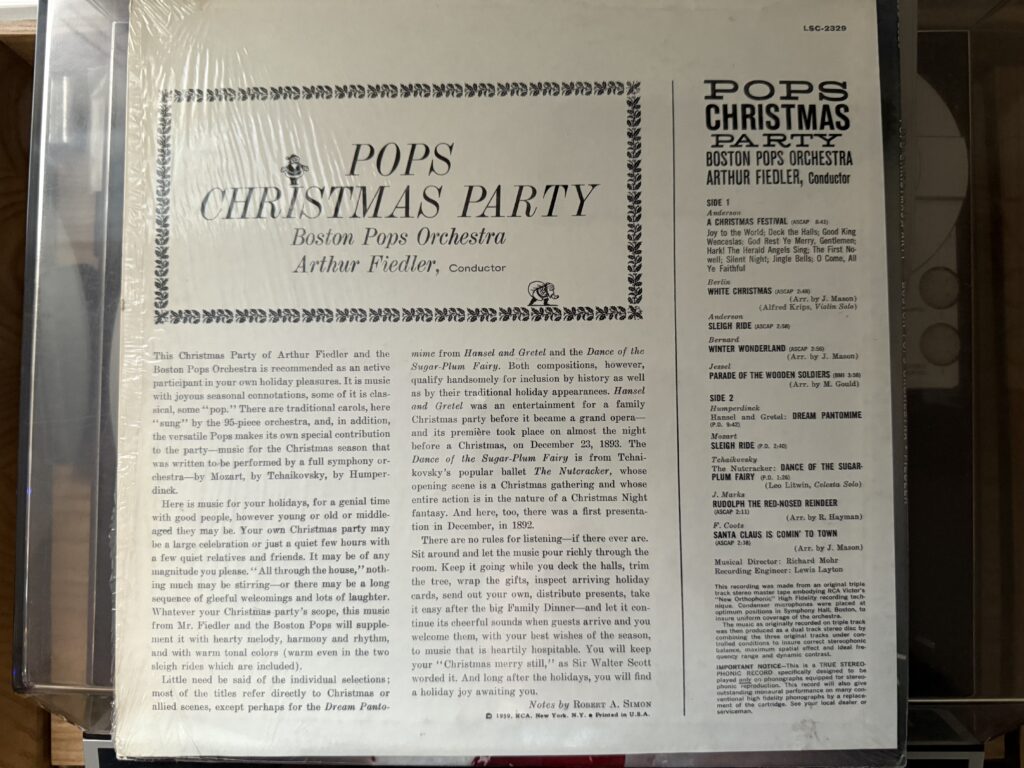
The success of Pops Christmas Party and its sequels played a role in establishing the Boston Pops in the format they still follow today: a spring of light classics and popular music, a December full of holiday cheer. It’s a tradition that I became a part of when I joined the Tanglewood Festival Chorus in 2005, and it’s still fun to hear “A Christmas Festival,” “Sleigh Ride,” “Parade of the Wooden Soldiers” and “Rudolph the Red-Nosed Reindeer” and sing the vocal version of Mason’s “White Christmas” year after year. Next time we’ll check in with another holiday tradition, albeit this time one that’s more unique to my family.
You can listen to this week’s album here:

